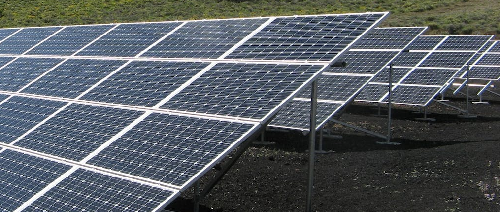solar panel guide
The world is at a crossroads when it comes to power generation. The need for clean, sustainable and renewable energy sources has never been greater. Solar energy in particular is proving to be a pioneer towards a greener future. Solar panels, also known as photovoltaic (PV) modules, are at the heart of this solar revolution. This article examines the technology behind solar panels, their benefits, challenges, and their role in shaping a more sustainable energy landscape.

How do solar panels work?
Essentially, a solar panel is a device that converts sunlight into electricity. The science behind this seemingly magical process is based on the photovoltaic effect. When photons (particles of light) hit the surface of the solar panel, they interact with the semiconductor material (usually silicon) within the panel. This interaction ejects an electron from the atom, creating an electric current. This electricity can be used to power electrical devices or stored in batteries for later use.
Types of solar panels
Currently, there are three main types of solar panels available on the market.
Monocrystalline, polycrystalline, thin-film.
Monocrystalline panel:
These panels consist of a monocrystalline structure, which is primarily silicon. It is known for its high efficiency and elegant appearance. Monocrystalline modules tend to be more expensive than other types, but offer better performance in limited spaces. Polycrystalline panel:
Polycrystalline panels are composed of multiple silicon crystals, which makes them slightly less efficient than monocrystalline panels. However, they are popular for residential installations because they are cheap and easy to manufacture.
Laminate panel:
Thin film disks are made by depositing a thin layer of semiconductor material on a substrate such as glass or metal. It is the least efficient of the three types, but has the advantage of being flexible and lightweight. Thin laminate panels are often used in niche applications where aesthetics and portability are important. Advantages of solar panels
Solar panels offer many benefits for both individuals and the planet as a whole.
Clean and renewable energy:
Solar panels harness the power of the sun, an almost infinite and clean source of energy. Unlike fossil fuels, solar energy emits no harmful greenhouse gases, making it an important tool in the fight against climate change.
Savings measures:
The initial cost of installing solar panels can be high, but it can save you money in the long run. By installing solar panels, you can generate electricity for free, which reduces or eliminates your monthly electricity bill. In some cases, surplus power can be sold back to the grid to further offset costs.
Energy independence:
Solar panels provide some energy independence, reducing dependence on fossil fuels and centralized energy systems. This is especially beneficial in remote areas with limited access to the power grid.
Durable and low maintenance:
Solar panels are designed to withstand a wide variety of weather conditions and can last for decades. With no moving parts, maintenance is minimal and typically limited to regular cleaning to ensure optimal performance. Challenges and considerations
While solar panels have many benefits, there are also challenges and considerations that must be addressed.
Acquisition cost:
The initial cost of installing solar panels can be a barrier for many individuals and businesses. However, falling prices and government incentives such as tax credits and subsidies are making solar systems more affordable.
Weather dependency:
Solar panels rely on sunlight to generate electricity, so their performance is dependent on the weather. Cloudy days and shadows can reduce energy production. However, with the advancement of technology,
